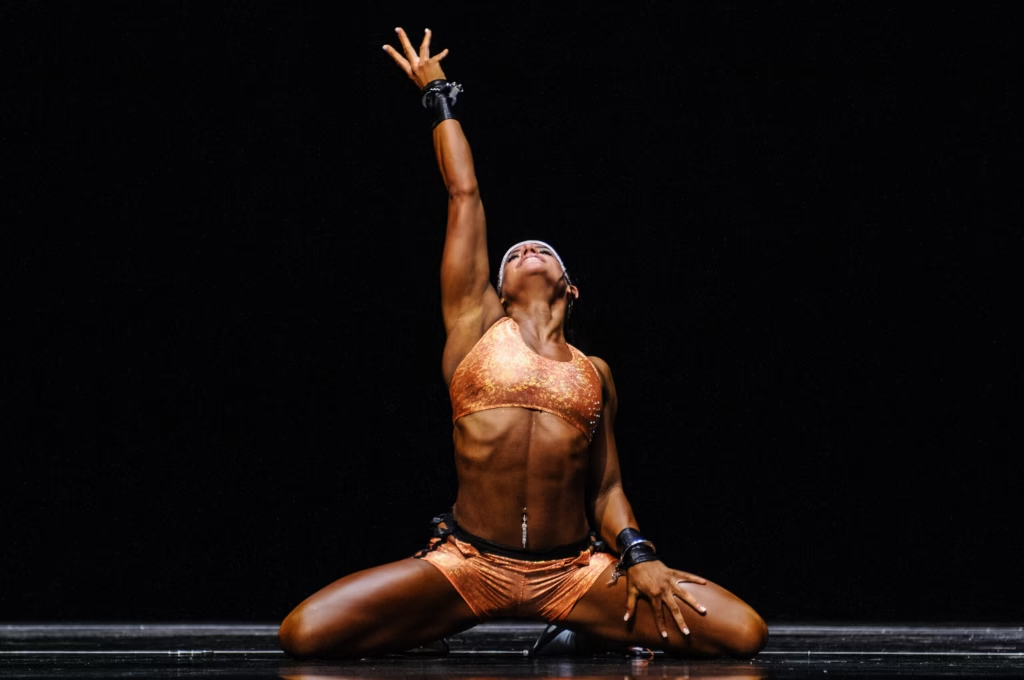
Bodybuilding is a sport that requires a great deal of dedication, discipline, and hard work. It is a lifestyle that involves strict dieting, intense training, and constant monitoring of one’s physique. However, what happens when a bodybuilder decides to retire from the sport? What is life like after bodybuilding?
The transition from bodybuilding can be challenging for many athletes. After years of focusing solely on their physique, they may find it difficult to adjust to a new way of life. They may struggle with body image issues, feel lost without the structure of their training and dieting regimen, and even experience depression or anxiety. However, with the right mindset and support system, it is possible to successfully navigate this transition and find fulfillment in new pursuits.
In this article, we will explore the various aspects of life after bodybuilding, including the health implications of retiring from the sport, career shifts, social impact, and maintaining fitness post-bodybuilding. Will also provide tips and advice for those who are struggling with this transition, as well as answer some frequently asked questions.
Key Takeaways

- Transitioning away from competitive bodybuilding requires careful consideration of both physical and mental health factors. Your body needs time to adjust to new activity levels and dietary approaches, while your mind adapts to life beyond competition prep cycles.
- Maintaining fitness post-bodybuilding doesn’t mean abandoning everything you’ve learned. Instead, it involves adapting your knowledge to create sustainable, enjoyable fitness routines that support long-term health rather than short-term competition goals.
Life After Bodybuilding: Transition
Competitive bodybuilding careers don’t last forever, and eventually, every athlete faces the reality of stepping away from the stage. This transition period brings both liberation and uncertainty, as former competitors navigate uncharted territory beyond their structured athletic lives.
Physical Changes in Life After Bodybuilding

Your body undergoes significant adaptations when transitioning away from competitive bodybuilding. Understanding these changes helps set realistic expectations and reduces anxiety about the process.
Muscle mass typically decreases without the extreme training intensity and precise nutrition protocols of competition preparation. This natural adaptation occurs as your body finds a new equilibrium, settling into a more sustainable state for long-term health.
Body composition shifts are inevitable during life after bodybuilding. Former competitors often experience modest increases in body fat percentage as they move away from the unsustainably low levels required for stage presentation. This change represents your body’s return to a healthier, more maintainable state.
Joint discomfort may become more apparent as the adrenaline and focus of competition training subsides. Years of heavy lifting and intense training can create cumulative stress on joints, tendons, and ligaments that becomes noticeable during the transition period.
Mental Adaptation
The transition away from bodybuilding can also be mentally challenging. For many bodybuilders, the sport iThe psychological aspects of life after bodybuilding often prove more challenging than physical changes. Competitive bodybuilding provides clear structure, measurable goals, and defined identity markers that suddenly disappear upon retirement.
Motivation can waver without the driving force of upcoming competitions. Former bodybuilders frequently struggle to maintain training intensity when external validation and competitive deadlines no longer exist. This shift requires developing new motivational frameworks based on health, enjoyment, and personal satisfaction.
Self-image adjustments represent another significant challenge in life after bodybuilding. Athletes accustomed to extreme conditioning must reconcile their changing physiques with their internal self-perception. This process takes time and often benefits from professional support.
The emotional landscape of transitioning from competitive bodybuilding can include grief, loss, and uncertainty. These feelings are natural responses to closing a significant life chapter and shouldn’t be minimized or ignored.

Health Implications
Competitive bodybuilding’s extreme demands can create lasting health implications that extend well into life after bodybuilding. Understanding these potential effects helps former athletes make informed decisions about their ongoing health management.
Long-Term Effects Requiring Attention
Research indicates several areas of concern for former competitive bodybuilders. Hormonal disruption from extreme dieting, supplement use, and training stress can persist long after retirement. Both male and female athletes may experience fertility challenges, mood regulation issues, and metabolic adaptations that require medical attention.
Cardiovascular health deserves particular focus during life after bodybuilding. The combination of extreme weight fluctuations, stimulant use, and cardiovascular stress from training can increase risks of hypertension, irregular heart rhythms, and other cardiac issues. Regular cardiovascular screening becomes crucial for former competitors.
Liver function may be compromised in athletes who used performance-enhancing substances during their competitive careers. Comprehensive blood work and ongoing medical monitoring help identify and address any liver stress or damage early.
Electrolyte management systems often become dysregulated after years of extreme manipulation for contests. Former bodybuilders may experience ongoing challenges with hydration, mineral balance, and kidney function that require careful monitoring.
Joint health issues frequently emerge in life after bodybuilding as the cumulative effects of years of heavy training become apparent. Arthritis, chronic pain, and mobility limitations may develop, requiring proactive management strategies.

Adopting a Balanced Lifestyle
Successfully transitioning to life after bodybuilding requires embracing balance in areas that were previously highly controlled and extreme. This shift from rigidity to flexibility can feel uncomfortable initially but ultimately leads to greater life satisfaction and health.
- Creating sustainable nutrition habits represents a fundamental aspect of life after bodybuilding. Rather than following restrictive competition diets, former athletes benefit from learning intuitive eating principles that include all macronutrients in appropriate proportions. This approach maintains muscle mass while supporting overall health and psychological well-being.
- Physical activity should remain a priority but with modified goals and approaches. Life after bodybuilding allows for exploring various movement forms that bring joy rather than stress. Resistance training can continue at moderate intensities to preserve muscle mass and bone density, while cardiovascular exercise supports heart health and mental well-being.
- Avoiding performance-enhancing substances becomes essential for long-term health in life after bodybuilding. Natural training methods may produce slower results but offer sustainable progress without health risks. Former users should work with healthcare providers to monitor and support their body’s natural recovery processes.
- Hormonal balance restoration often requires patience and professional guidance during life after bodybuilding. Stress management techniques including meditation, adequate sleep, and work-life balance contribute significantly to hormonal recovery. Some former athletes may benefit from hormone replacement therapy under medical supervision.
Career Shifts
The skills, knowledge, and discipline developed through competitive bodybuilding translate remarkably well to various career opportunities. Life after bodybuilding often opens doors to fulfilling professional paths within and beyond the fitness industry.
From Athlete to Coach
Coaching represents a natural progression for many athletes transitioning to life after bodybuilding. Former competitors possess firsthand experience with training methodologies, nutrition protocols, and the mental challenges of physique development. This knowledge proves invaluable when guiding others through their fitness journeys.
Successful coaching in life after bodybuilding requires developing communication skills, empathy, and business acumen beyond athletic knowledge. Former competitors must learn to adapt their extreme approaches for general population clients who have different goals, limitations, and life circumstances.

Professional development through certifications, continuing education, and business training enhances coaching effectiveness. Organizations like NASM, ACSM, and specialized bodybuilding coaching certifications provide credible foundations for career development.
Expanding Professional Opportunities

Life after bodybuilding opens numerous professional avenues beyond traditional coaching roles. Personal training allows for one-on-one client relationships and flexible scheduling that appeals to many former competitors. Fitness instruction in group settings provides community interaction and diverse programming opportunities.
Nutrition consulting leverages the detailed knowledge gained through years of precise meal planning and body composition manipulation. Former bodybuilders often excel in helping clients navigate dietary challenges and achieve sustainable results.
The digital fitness space offers exciting opportunities for content creation, online coaching, and product development. Social media platforms enable former competitors to share their knowledge, build communities, and create multiple income streams while maintaining flexibility in their schedules.
Social Impact and Personal Identity
The social dynamics of life after bodybuilding involve navigating changed relationships, addressing misconceptions, and rebuilding identity beyond athletic achievement. These adjustments require time, patience, and often professional support.
Competitive bodybuilding can create social isolation due to rigid scheduling, dietary restrictions, and lifestyle demands that differ significantly from mainstream social activities. Life after bodybuilding offers opportunities to rebuild these connections and develop more balanced relationships.
Former competitors often struggle with how others perceive them during life after bodybuilding. Some people maintain stereotypical views about bodybuilders being vain or obsessive, while others may question the athlete’s commitment if their physique changes. Learning to navigate these perceptions becomes part of the transition process.

Body image concerns frequently persist into life after bodybuilding as former competitors adjust to physique changes. Body dysmorphia, perfectionism, and self-worth tied to appearance can create ongoing challenges that benefit from professional counseling or therapy.
Rebuilding personal identity represents perhaps the most significant aspect of life after bodybuilding. Athletes must discover who they are beyond their competitive achievements and physical appearance. This process involves exploring new interests, developing relationships outside the fitness industry, and finding meaning in pursuits beyond bodybuilding.
The positive aspects of life after bodybuilding include increased freedom, improved work-life balance, and opportunities to inspire others through transformation stories and authentic experiences. Many former competitors become powerful advocates for balanced approaches to fitness and mental health.

Maintaining Fitness Post Bodybuilding
Sustaining an active lifestyle remains crucial in life after bodybuilding, but the approach shifts dramatically from competition-focused training to health-centered movement. This transition allows for greater variety, enjoyment, and sustainability in fitness routines.
Alternative Fitness Routines
Movement diversity becomes a cornerstone of life after bodybuilding as former competitors explore activities beyond traditional weight training. Yoga offers flexibility improvements, stress reduction, and mind-body connection that many athletes discover for the first time after leaving competition.
Pilates provides core strengthening and postural improvements that address imbalances created by years of heavy lifting. The controlled movements and breathing techniques complement traditional strength training while offering therapeutic benefits.
Cardiovascular activities like hiking, cycling, swimming, or dancing reintroduce fun into fitness while supporting heart health. These activities can be social, outdoor-oriented, or skill-based, adding dimensions to physical activity that were absent during competitive years.
Nutrition for Long-Term Health

Nutritional approaches in life after bodybuilding emphasize sustainability, enjoyment, and overall health rather than extreme body composition goals. This shift allows for greater food variety, social eating experiences, and intuitive hunger and satiety cues.
Protein remains important for muscle maintenance, but sources can be more varied and less obsessively measured. Plant-based proteins, seasonal foods, and cultural preferences can guide choices rather than strict macro calculations.
Carbohydrate and fat intake can normalize to support energy levels, hormone production, and satisfaction without the extreme restrictions of contest preparation. This balance supports better sleep, mood stability, and social flexibility around food choices.
Nutrition for Non-Bodybuilders
- “How can strength training build healthier bodies as we age?” – This article from the National Institute on Aging discusses the benefits of strength training for older adults. While it doesn’t specifically address bodybuilding, it does provide some information on the importance of strength training for maintaining muscle mass and overall health.
- “Bodybuilding Meal Plan: What to Eat, What to Avoid” – This article from Healthline provides information on the types of foods that bodybuilders should eat to support their muscle growth. While it doesn’t specifically address the long-term effects of bodybuilding, it does provide some insights into the importance of proper nutrition for bodybuilders.

Conclusion
Bodybuilding can be an intense and demanding activity that requires a significant amount of time, dStepping away from competitive bodybuilding opens a new chapter filled with opportunities for growth, balance, and fulfillment beyond the stage. While this transition presents unique challenges, former competitors who approach the process with patience and openness often discover greater satisfaction than they experienced during their competitive years.
The key lies in viewing retirement not as an ending, but as an evolution. The discipline, knowledge, and mental strength developed through years of competition become valuable tools for success in entirely new pursuits. Whether channeling expertise into coaching careers, exploring alternative fitness approaches, or simply enjoying improved work-life balance, former athletes can absolutely thrive in their post-competition lives.
Success during this transition requires releasing perfectionist tendencies, embracing balance, and finding fresh sources of motivation and identity. With proper support, realistic expectations, and commitment to long-term health, this period can become the most rewarding of an athlete’s entire journey.
Your competitive years have prepared you for whatever comes next. Trust the process, be patient with yourself, and remember that your post-stage chapters can be just as extraordinary as the years spent pursuing competition perfection.

Some Questions You May Have:
How can bodybuilders maintain muscle mass after retiring?
Retired bodybuilders can maintain muscle mass by continuing to engage in resistance training and following a balanced diet. It is important to gradually decrease the intensity and frequency of workouts to avoid injury. Additionally, incorporating active recovery days, such as yoga or light cardio, can help prevent muscle loss while allowing the body to recover.
What are some common health issues faced by retired bodybuilders?
Retired bodybuilders may face health issues such as joint pain, arthritis, and cardiovascular disease due to the strain put on their bodies during their careers. It is important for retired bodybuilders to prioritize their health and seek medical attention if necessary.
What are some effective ways to reduce water retention after a bodybuilding competition?
To reduce water retention after a bodybuilding competition, bodybuilders can increase their water intake, reduce their sodium intake, and engage in cardiovascular exercise. It is also important to gradually decrease the intensity and frequency of workouts to allow the body to recover.
How can bodybuilders transition into a healthy lifestyle after retiring?
Bodybuilders can transition into a healthy lifestyle after retiring by gradually decreasing the intensity and frequency of workouts and incorporating other forms of exercise such as hiking or swimming. It is also important to focus on a balanced diet and prioritize mental health.
What are some common mental health challenges faced by retired bodybuilders?
Retired bodybuilders may face mental health challenges such as body dysmorphia, depression, and anxiety due to the transition from a highly structured and competitive lifestyle. It is important for retired bodybuilders to seek support and prioritize mental health.
What are some alternative forms of exercise for retired bodybuilders?
Retired bodybuilders can engage in alternative forms of exercise such as yoga, Pilates, swimming, or cycling. These forms of exercise can help prevent injury while still providing a challenging workout.
Glen has over 20 years within the Health and Fitness lifestyle industry, he’s served as a head photographer and in most all cases an executive in a number of Canadian federations such as WNSO/FAME, Muscle-Mania, UFE, IDFA, WBFF to name a few in addition the Canadian Bodybuilding Federation in the provinces of Ontario, Quebec, and Saskatchewan, and with the International Federation of Bodybuilding.







